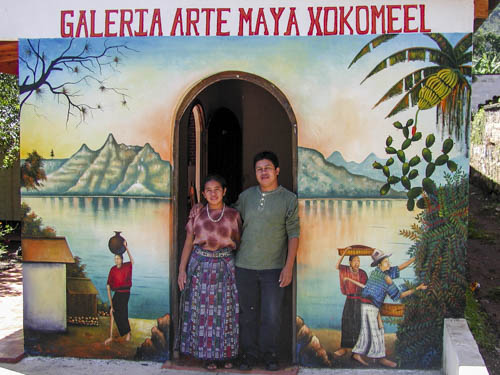Antonio Vásquez Yojcom
By Joseph Johnston
While he was still a teenager, Antonio Vásquez Yojcom got his father to pay for
lessons from Pedro Rafaé González Chavajay in nearby San Pedro. When he finished lessons and
started out on his own, one of his first paintings was of a theme, childbirth, that Pedro Rafaé
had been working on while Antonio was apprenticing. In Maya communities, midwives were
traditionally the person who delivered newborn. This was a theme that Antonio would return
to again and again throughout his career. |
 |
Antonio Vásquez Yojcom with his wife in front of his studio/gallery which was clearly visible
to passing tourists. If I recall correctly, he was the first to paint a mural on his gallery.
This photo was taken in 2000. Xokomeel is the Maya word for the afternoon winds that pick up
arround Lake Atitalán. |
 |
Antonio Vásquez Yojcom stands beside a work in progress. The scene is a procession, probably for the feast
of San Juan the patron saint of San Juan la Laguna. The church and mountains surrounding San Juan are the
background. The church underwent several years where it was being rebuilt much larger than before.
Only the old facade was retained. |






